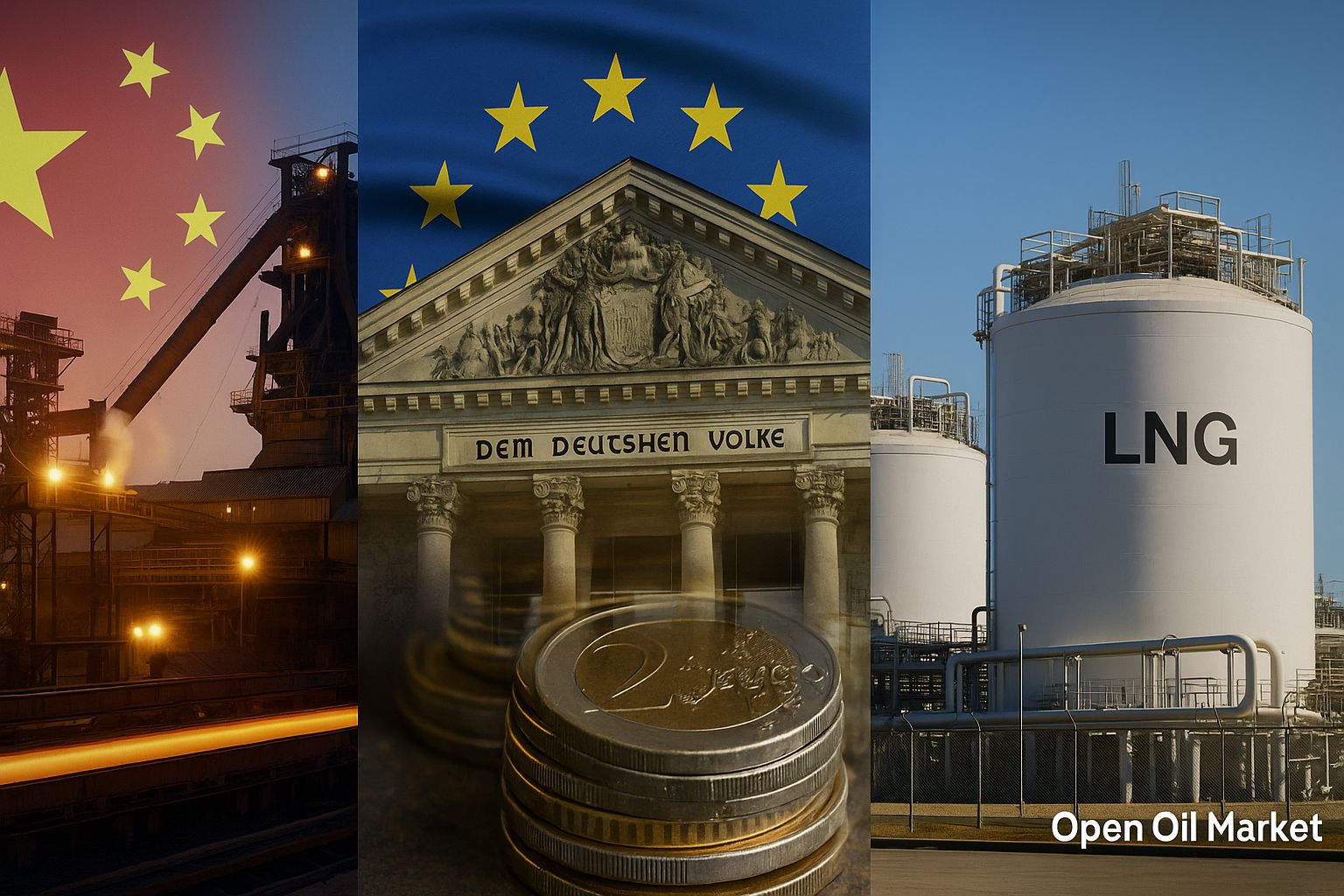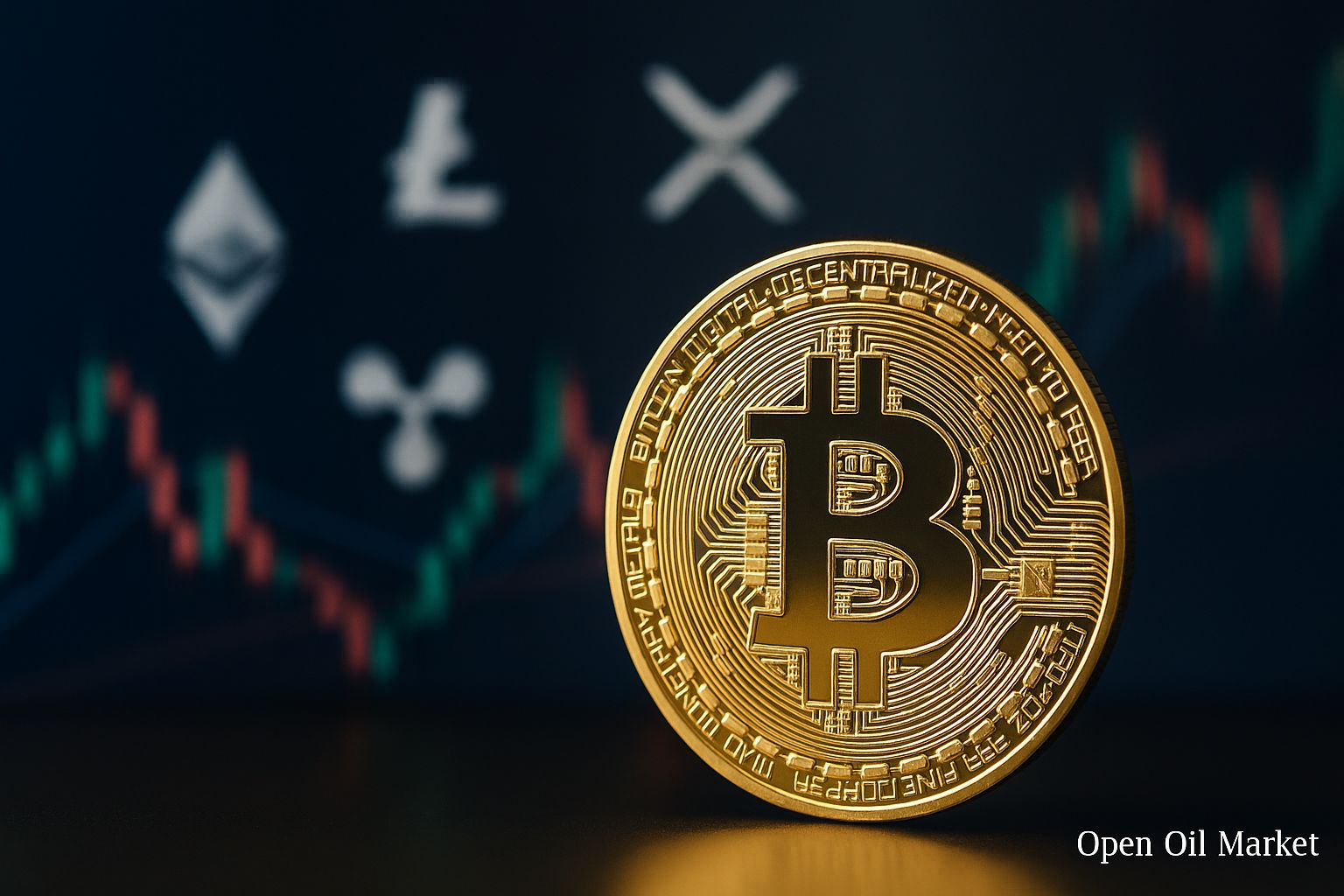The Global Venture Market Rebounds: Major AI Deals, New IPOs, Growth of Venture Hubs, and Increased Activity from Investors in the USA, Europe, and Asia. A Detailed Review of Trends as of November 5, 2025.
By early November 2025, the global venture market is confidently recovering from the prolonged downturn of recent years. Investors worldwide are once again actively funding technology startups, with record deals being closed and companies' IPO plans moving back into focus. Major players are returning to the market with substantial investments, governments are enhancing support for innovation, and private venture capital is once again flowing into the startup ecosystem.
Venture activity is witnessing growth across all regions. The USA continues to lead (particularly in the artificial intelligence sector, which accounts for the lion's share of new investments), but other parts of the world are also gaining momentum. In the Middle East, the total investment almost doubled over the year, with sovereign funds supporting the development of local tech hubs. Europe shows stability: Germany has for the first time surpassed the UK in the number of venture deals, and early-stage funding is particularly vibrant. In Asia, the picture is mixed: China is showing signs of recovery after a weak period, although its activity still lags behind the peak levels of 2021–2022; concurrently, India and Southeast Asia are attracting record capital amidst a relative downturn in China. The startup ecosystems in Russia and other CIS countries are also striving to keep pace, despite external constraints. A new venture upswing is taking shape, even though investors remain selective and cautious.
Below are key events and trends shaping the venture market landscape as of November 5, 2025:
- Capital influx and the return of mega-deals. Leading venture funds are raising record amounts, and major investors are actively pouring funds back into the market, saturating it with capital and rekindling risk appetite.
- Extraordinary growth in AI investments and a new wave of "unicorns". Exceptionally large funding rounds are driving startup valuations to new heights, particularly in the artificial intelligence segment, giving rise to a slew of new "unicorns".
- The return of the IPO market. Successful public listings of tech companies are confirming that the long-awaited "window" for exits has reopened, restoring liquidity to the venture market.
- Broader sector focus. Venture capital is flowing not only into AI, but also into fintech, climate and "green" projects, biotechnology, defence developments, and even revitalized crypto startups.
- A wave of consolidation: mergers and acquisitions (M&A). New activity in the M&A space is reshaping the industry landscape, creating opportunities for exits and accelerated growth for the strongest players.
- Regional growth: new venture hubs. The Middle East, Southeast Asia, Latin America, and other regions are strengthening their positions on the global venture map, attracting record capital amid a slowdown in China.
- Russia and CIS: local initiatives. Despite restrictions, new funds and startup-support programs are being launched in the region, designed to develop local ecosystems and attract investors' attention.
The Return of Mega Funds: Big Money Back in the Market
The largest investment players are triumphantly returning to the venture arena, signalling a new wave of risk appetite. The Japanese conglomerate SoftBank, for instance, is forming a new Vision Fund III totalling around $40 billion, focused on advanced technologies. Sovereign funds from the Gulf states have also become active: they are injecting billions into tech projects and launching government mega-programmes to support startups, establishing their own tech hubs in the Middle East. Simultaneously, dozens of new venture funds are being created worldwide, attracting significant institutional capital for investments in high-tech sectors.
Renowned venture firms from Silicon Valley are also ramping up their presence. They have amassed record reserves of uninvested capital ("dry powder") — hundreds of billions of dollars ready for investment as market confidence returns. The influx of such "big money" is filling the startup market with liquidity, providing resources for new funding rounds and supporting valuation growth for promising companies. The return of mega funds and large investors intensifies competition for the best deals, but simultaneously instils confidence that capital inflows into the market will continue.
Record Investments in AI: A New Wave of Unicorns
The artificial intelligence sector is the main driver of the current venture boom, demonstrating unprecedented levels of funding. Investors are keen to position themselves among the leaders of the AI market, directing colossal funds into the most promising projects. Only in the past few weeks, several mega-rounds have been announced: the US startup Crusoe (infrastructure for AI data centres) raised approximately $1.4 billion at a valuation of around $10 billion; significant investments have also been secured by foundational AI model developers Anthropic (approximately $13 billion raised) and xAI (about $5.3 billion). Such deals are soaring to unprecedented heights, highlighting the frenzy surrounding AI startups and sparking a new wave of "unicorn" companies. Market estimates suggest that nearly half of all venture investments worldwide in the third quarter of 2025 were directed towards AI companies.
Importantly, venture capital is flowing not only into applied AI products, but also into the infrastructure that supports them — the market is ready to finance even the "picks and shovels" of this new technological gold rush. Experts caution about the risk of overheating individual projects, yet investors' appetite for AI startups remains unabated.
The IPO Market Revives: A Window of Opportunity for Exits
The global primary public offering market is emerging from a prolonged lull and is once again gaining traction. In Asia, Hong Kong has initiated a new wave of IPOs: in recent months, several large technology firms have successfully gone public, collectively raising billions of dollars in investments. The situation is also improving in the US and Europe: a number of highly valued startups (such as fintech giant Chime and design platform Figma) have successfully debuted on the stock exchange, demonstrating strong demand from investors and confident price growth. By the end of 2025, other "unicorns", including payment service Stripe and several large tech companies, are also preparing for public offerings.
Even the crypto industry is attempting to capitalise on the revival: fintech company Circle successfully conducted its IPO in the summer (its shares subsequently saw a significant rise), while crypto exchange Bullish has filed for listing in the US with a target valuation of around $4 billion. The resurgence of activity in the IPO market is crucial for the venture ecosystem: successful public exits enable funds to realise profitable exits and reallocate freed-up capital into new projects, thereby sustaining the industry's further growth.
Expanding Sector Focus: Not Just AI
Venture investments in 2025 are spanning a much broader array of industries and are no longer limited to the AI craze. Activity is notably reviving in the fintech sector (with large funding rounds occurring globally), in climate and agri-tech (green innovations are in demand), in biotech and med-tech (new developments are again receiving capital), in defence projects (demand for dual-use technologies), and even in crypto startups (after market stabilisation, certain projects are again attracting investment). This broad focus lends resilience to the startup ecosystem and mitigates the risk of overheating in individual segments.
Consolidation and M&A: Larger Players Emerging
Inflated startup valuations and fierce competition across markets are sparking a wave of consolidation. Significant mergers and acquisitions (M&A) are once again coming to the forefront, enlarging key players and reshaping the technology sector landscape. Following a period of calm in previous years, corporate giants and "unicorns" with healthy cash reserves are ramping up acquisitions of promising projects to bolster their positions and gain access to new technologies.
In the third quarter of 2025, the volume of global M&A deals involving venture companies reached a peak not seen in years: nine startups were acquired for over $1 billion each. Among the most noteworthy — Google’s acquisition of Israeli cybersecurity startup Wiz for approximately $32 billion (the largest exit in the history of Israeli high-tech). Such mega-deals illustrate corporations' desire to secure cutting-edge technologies and teams. The wave of mergers provides investors with much-needed liquidity and enables successful players to scale their businesses, though the overall number of independent startups is declining. The uptick in M&A activity indicates a maturing market: mature projects are either merging with each other or becoming acquisition targets for corporations, while venture funds enjoy the long-awaited profitable exits.
Regional Growth: New Venture Hubs
Venture activity is becoming increasingly global — new regional innovation centres are emerging. The Middle East is currently one of the most dynamic markets: Gulf countries, which previously invested mainly abroad, are actively developing their own ecosystems. Technoparks and funds to support local startups are being established, leading to record deals — individual projects there are attracting financing in the hundreds of millions of dollars. Concurrently, Asia, beyond China, is also reviving. Southeast Asia (led by Singapore) has tripled its volume of venture investments over the year due to several significant funding rounds. India has slowed slightly but maintains a high funding level, while significant investments have taken place in semiconductor and robotics startups in South Korea and Japan. Israel continues to hold its position as one of the world’s innovation hubs, although activity there is somewhat below the peaks of 2021.
Europe, while still lagging behind the US in investment volume, shows resilience and gradual growth. Venture funding for European startups has risen at double-digit rates, with particularly active deals in early stages. The geography of significant funding rounds is expanding: beyond London and Berlin, investors are increasingly finding promising projects in Paris, Stockholm, Tel Aviv, and other tech clusters. Several notable M&A deals in Europe have confirmed the maturity of local players. Latin America is also reviving: for instance, venture investments in Brazil rose by nearly 50% over the summer, once again placing the country at the forefront of the region. Thus, the global venture map continues to expand — capital is increasingly flowing to new locations in search of talented teams and promising ideas.
Russia and the CIS: Local Initiatives
Despite external constraints, there is a revival of startup activity in Russia and neighbouring countries. The Russian venture market has begun to emerge from stagnation: the volume of investments in the first half of 2025 nearly doubled (to around $87 million), the number of active investors increased, and new funds with approximately 10 billion roubles each have been launched. Private and state players are filling the niche left by departing foreign funds: domestic venture funds are being established, and large corporations are launching accelerators and technology project support programmes. Similar processes are occurring in Kazakhstan, Uzbekistan, and other countries in the region. These initiatives inspire cautious optimism, although the scale of the CIS venture market still trails behind global leaders.
Cautious Optimism
The venture market is ending 2025 on an upward trajectory, but growth is occurring more prudently than in past booms. Investors are placing greater emphasis on the quality of projects and the sustainability of business models, avoiding excessive risk. It is anticipated that in 2026, venture investments will continue to grow at moderate rates, and the startup ecosystem will develop in a more balanced and rational manner.




